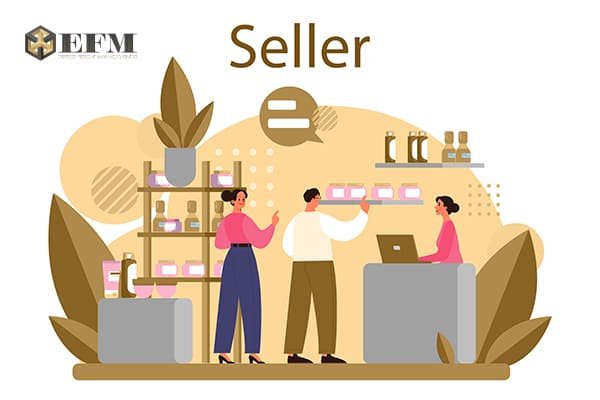DAP Incoterms: Business Guide

Making sense of global trade can feel like a puzzle, especially with all the shipping rules and border procedures. But there’s a helpful tool called Incoterms®, created by the International Chamber of Commerce (ICC). Think of them as a universal playbook that clearly outlines who – the buyer or the seller – is responsible for what when goods are bought and sold across borders, especially regarding how those goods get delivered.
This guide will walk you through one specific Incoterm: DAP, which stands for “Delivered at Place.” Under DAP, the seller takes on most of the job of getting the goods to an agreed-upon location. For businesses, especially those in the US involved in buying from or selling to other countries, understanding DAP is key because it clearly spells out who handles which tasks, who pays for what, and who bears the risk if something goes wrong before the goods arrive at that named destination.
Disclaimer: This article provides a general overview of DAP Incoterms and is for informational purposes only. It is not legal or professional advice. Parties should always refer to the official text of the Incoterms® 2020 rules published by the International Chamber of Commerce (ICC) and seek advice from legal and logistics services professionals when negotiating specific contract terms.
What Are Incoterms?
Before we explore the specifics of DAP, it’s useful to understand the broader concept of Incoterms®. Think of Incoterms® as a globally accepted set of rules or a common language for international and domestic trade, published by the International Chamber of Commerce (ICC). First introduced in 1936 and regularly updated to reflect current business practices – with Incoterms® 2020 being the latest version – these terms are designed to prevent confusion and disputes between buyers and sellers in different countries.
- Obligations: Which party is responsible for tasks such as transport, loading, unloading, and customs clearance.
- Risk Transfer: The precise point at which the risk of loss or damage to the goods passes from the seller to the buyer.
- Cost Allocation: Which party bears specific costs associated with the shipment.
There are currently 11 Incoterms®, categorized by mode of transport.
What Is DAP?
DAP (Delivered at Place) means that the seller delivers the goods when they are placed at the disposal of the buyer on the arriving means of transport, ready for unloading at the named place of destination. Under DAP, the seller bears all risks and costs involved in bringing the goods to the specified destination point, but not the cost of unloading the goods at the destination, nor the costs and risks associated with import clearance in the country of destination.
DAP is a versatile term that can be used for any mode of transport, including multimodal transport (a combination of different transport modes like air freight, sea freight, or trucking). This flexibility is a key advantage, though businesses must still choose the right mode for their needs, like comparing air freight vs sea freight. This makes it a practical choice for various international trade scenarios where the seller agrees to manage the main carriage to the buyer’s country, up to a specific named point.
Key Obligations
Understanding the division of responsibilities is paramount when using DAP.
Seller’s Responsibilities

- Goods, Commercial Invoice, and Documentation: Provide the goods as per the sales contract, along with the commercial invoice and any other agreed-upon documentation.
- Export Packaging and Marking: Ensure goods are appropriately packaged and marked for export and for transport to the named destination.
- Export Licenses and Customs Formalities: Obtain all necessary export licenses and handle all export customs clearance and costs in the country of origin.
- Contract of Carriage: Contract and pay for the carriage of the goods to the named place of destination.
- Delivery to Named Place of Destination: Transport the goods to the agreed-upon “named place of destination” and make them available to the buyer on the arriving means of transport, ready for unloading by the buyer, on the agreed date or within the agreed period.
- Proof of Delivery: Provide the buyer with a transport document or other evidence confirming the goods have arrived at the named place of destination.
- Costs: Bear all costs relating to the goods and their transport until they have been made available to the buyer at the named place of destination, ready for unloading (excluding import duties and taxes in the buyer’s country and unloading costs).
- Risk: Bear all risks of loss or damage to the goods until they have been delivered to the named place of destination as described above.
Buyer’s Responsibilities

- Payment for Goods: Pay the price of the goods as stipulated in the sales contract.
- Unloading at Destination: Unload the goods from the arriving means of transport at the named place of destination, unless otherwise agreed.
- Import Customs Formalities and Duties/Taxes: Handle and pay for all import customs clearance formalities, duties, taxes, and other charges in the country of import. This is a critical distinction from DDP (Delivered Duty Paid).
- Onward Carriage (if applicable): If the named place of destination is not the final destination, the buyer is responsible for any further transport.
- Risk After Delivery: Assume all risks of loss or damage to the goods from the moment the seller has made them available at the named place of destination.
- Notification to Seller: If the buyer is entitled to determine the time within an agreed period and/or the point of taking delivery at the named place of destination, they must give the seller sufficient notice.
- Costs After Delivery: Bear all costs relating to the goods from the moment they have been made available at the named place of destination, including unloading and import clearance costs.
The “Named Place of Destination”
When you use the DAP Incoterm, agreeing on the “named place of destination” is absolutely critical – think of it as the exact address or location where the seller’s core responsibilities for the shipment end. This “named place” is where the seller hands over responsibility for the goods (though not necessarily ownership) to the buyer. The seller is responsible for getting the goods to this precise spot, ready for the buyer to unload them from the truck, ship, or plane.
You need to be crystal clear and specific about this point in your sales contract. If this location is vague – say, just “DAP Chicago” instead of “DAP Buyer’s Warehouse, 123 Main Street, Chicago” – it can lead to confusion and costly disagreements later. For instance, who pays for moving the goods from the port to an inland facility for warehousing if the “named place” isn’t specific enough? Under DAP, if the named place is “Buyer’s Warehouse, 123 Main Street, Chicago,” then the seller covers transport costs to that address. If it’s just “Port of Chicago,” the seller’s cost obligation ends there.
The seller fulfills their obligation when the goods are on the arriving vehicle/vessel, at the buyer’s disposal, ready for unloading at this specified point. It’s crucial to distinguish this from the “place of delivery to carrier” often seen in “F” or “C” Incoterms; DAP focuses on the arrival at the agreed destination.
Transfer of Risk
Under DAP, the transfer of risk from the seller to the buyer occurs when the goods are made available to the buyer on the arriving means of transport, ready for unloading, at the named place of destination.
This means the seller bears the significant risk of loss or damage to the goods during the entire journey – including pre-carriage, main international transit, and any on-carriage in the destination country up to the named place. Once the goods are at that point, ready for the buyer to take over for unloading, the risk transfers to the buyer.
Cost Allocation
Understanding who pays for what is straightforward with DAP. Essentially, the seller covers all expenses to get the goods to the agreed-upon destination point, ready for the buyer to unload. This includes the costs of preparing the goods (like quality checks and export packaging), handling export customs and licenses in their own country, and paying for the main transportation to bring the goods to the “named place of destination.” The seller also provides the buyer with proof that the goods have arrived.
Once the goods arrive at that named destination and are ready for unloading, the buyer takes over the costs. This primarily means the buyer pays for unloading the goods from the arriving truck, ship, or plane. The buyer is also responsible for all costs related to importing the goods into their country, such as import duties, taxes, and customs clearance fees. If the goods need to be moved further after they’re unloaded at the named destination, the buyer pays for that too.
When Should You Use DAP?
DAP is a practical choice for many international trade scenarios and works for any type of transport. It’s particularly useful when the buyer wants the goods delivered to a specific location in their country—like their factory or warehouse—and is happy to handle the unloading and import processes themselves. It also suits sellers who are comfortable managing and paying for the main journey of the goods to that destination point, effectively offering a door-to-door shipping solution up to the final leg of the journey.
Comparison to DDP (Delivered Duty Paid)
When compared to DDP (Delivered Duty Paid), the main difference is who handles import customs and pays the related duties and taxes. With DDP, the seller takes on nearly all responsibilities. DAP is often preferred by buyers who are well-equipped to manage their own country’s import procedures or want direct control over these costs. For sellers, DAP is less burdensome as it removes the often complex and risky task of navigating a foreign country’s import rules and tax systems.
Comparison To “C” Terms (e.g., CIF, CPT)
DAP differs markedly from ‘C’ terms like CPT or CIF primarily in when and where risk transfers. While sellers using ‘C’ terms pay for the main carriage to a named destination, the risk for the goods shifts to the buyer much earlier—typically when the goods are handed to the first carrier in the export country. This means the buyer bears the transit risk for the main international journey. Under DAP, however, the seller retains this risk until the goods arrive at the named place of destination, ready for unloading by the buyer, offering the buyer greater assurance regarding the goods’ condition upon arrival.
Things To Consider

For US businesses, whether importing or exporting, there are several practical points to consider when utilizing the DAP Incoterm.
US importers acting as the buyer should be exceptionally precise about defining the “named place of destination” in the sales contract. They must fully understand that they are responsible for arranging and paying for the unloading of the goods from the arriving means of transport, as well as handling all US import procedures and associated costs, such as duties and taxes. Clear and timely communication with the seller regarding the estimated time of arrival (ETA) is crucial for arranging the necessary unloading operations efficiently.
For US exporters acting as the seller, it is vital to accurately factor in all costs of transport up to the named place of destination, as these will be for their account. They must be unequivocally clear on the exact point where their responsibility for the goods ends, which is just before the unloading process commences at the destination. Given that the seller bears the risk of loss or damage during transit until the goods reach the named destination, US exporters should strongly consider obtaining cargo insurance to cover this exposure.
The importance of accurate documentation for customs clearance cannot be overstated for both parties. Commercial invoices, packing lists, and transport documents must meticulously reflect that the transaction is governed by DAP terms and must clearly state the full and precise “named place of destination.” Furthermore, consistent and effective communication between the buyer and the seller is essential. This ensures both parties are aligned regarding the arrival schedule of the goods and the buyer’s readiness to undertake the unloading.
Examples
To illustrate how DAP functions in real-world scenarios, consider its application in trade between the US and ASEAN countries.
Imagine a US retailer importing furniture from Malaysia under “DAP Retailer’s Warehouse, Chicago, IL, USA.” The Malaysian seller would manage and pay for everything involved in shipping from Malaysia to USA. This includes getting the furniture from their factory in Malaysia to the retailer’s Chicago warehouse, ready for unloading. This includes export procedures in Malaysia and all shipping costs to Chicago. Once the truck arrives at the Chicago warehouse, the US retailer takes over, paying for unloading and handling US import customs and any duties.
Conversely, consider a US machinery manufacturer selling equipment to a buyer in Thailand using “DAP Buyer’s Factory, Bangkok, Thailand.” The US seller would arrange and pay for shipping to Thailand, taking the machinery from their US plant to the buyer’s factory in Bangkok, including US export customs. They bear the risk until it arrives at the Bangkok factory, ready for unloading. The Thai buyer then pays for unloading the machinery and for Thai import customs clearance and taxes.
The principles discussed in these US-ASEAN examples are broadly applicable to trade across the region. Whether your business involves:
- Shipping to Singapore or shipping from Singapore to USA
- Shipping to Indonesia or shipping from Indonesia to USA
- Shipping to Vietnam or
- Shipping to Philippines
A clear understanding of DAP Incoterms is beneficial.
Conclusion
To succeed in international trade, understanding Incoterms® like DAP (Delivered at Place) is very helpful. DAP is a valuable rule where the seller delivers goods to an agreed destination, making them ready for the buyer to unload. The seller bears all risks and costs until the goods reach this specific point. For DAP to work smoothly, it is crucial to precisely define the “named place of destination” and ensure all documents are accurate. Using DAP correctly helps businesses achieve smoother transactions, reduce disagreements, and make their international trade more predictable.
At Express Freight Management, we understand the nuances of Incoterms and the critical role they play in your supply chain. Our experienced team is ready to provide expert guidance and comprehensive freight forwarding services tailored to your specific needs, whether you’re shipping to or from the USA, engaging in ASEAN trade, or require specialized logistics solutions. Don’t let the complexities of international shipping hinder your business growth. Contact us today to discuss how our freight forwarding expertise can help you leverage DAP and other Incoterms effectively, ensuring your cargo moves smoothly and efficiently across borders.
Streamline your logistics with Express Freight Management – your trusted partner for seamless global shipping solutions. As a leading international freight forwarder based in the United States, we have successfully managed trades between the United States and Brunei, Cambodia, Indonesia, Laos, Malaysia, Myanmar, Philippines, Singapore, Thailand, and Vietnam for nearly two decades. With expert knowledge, advanced technology, and a commitment to reliability, we provide seamless logistics management that helps you focus on what matters most—growing your business.



